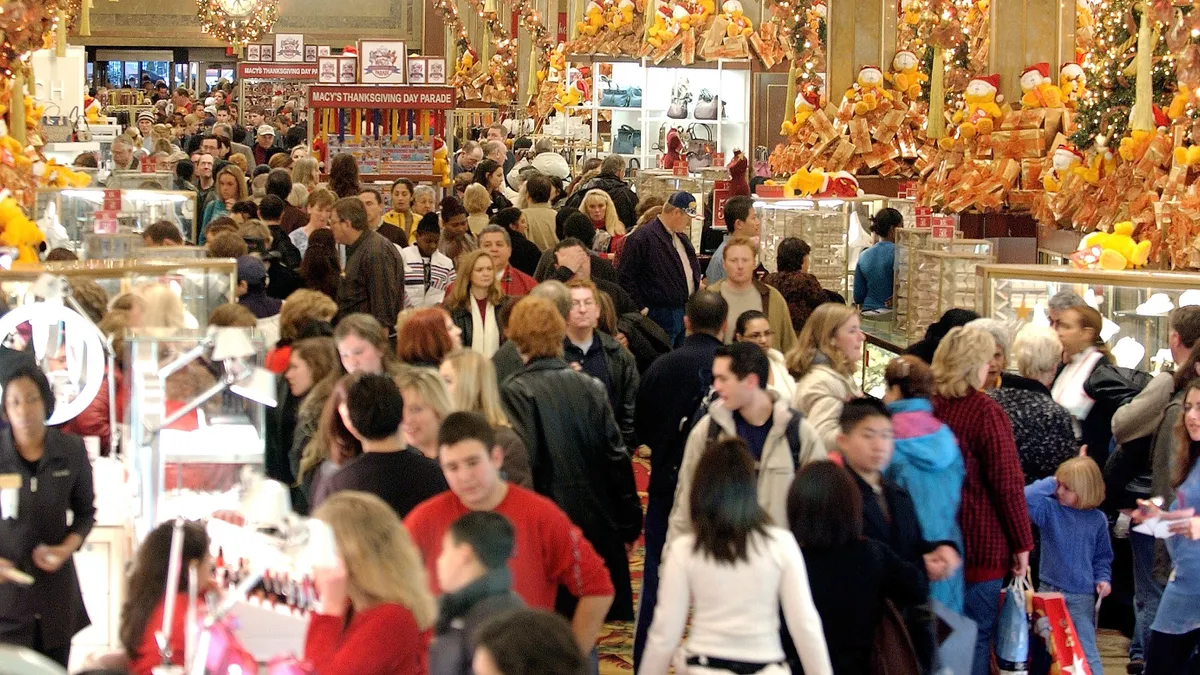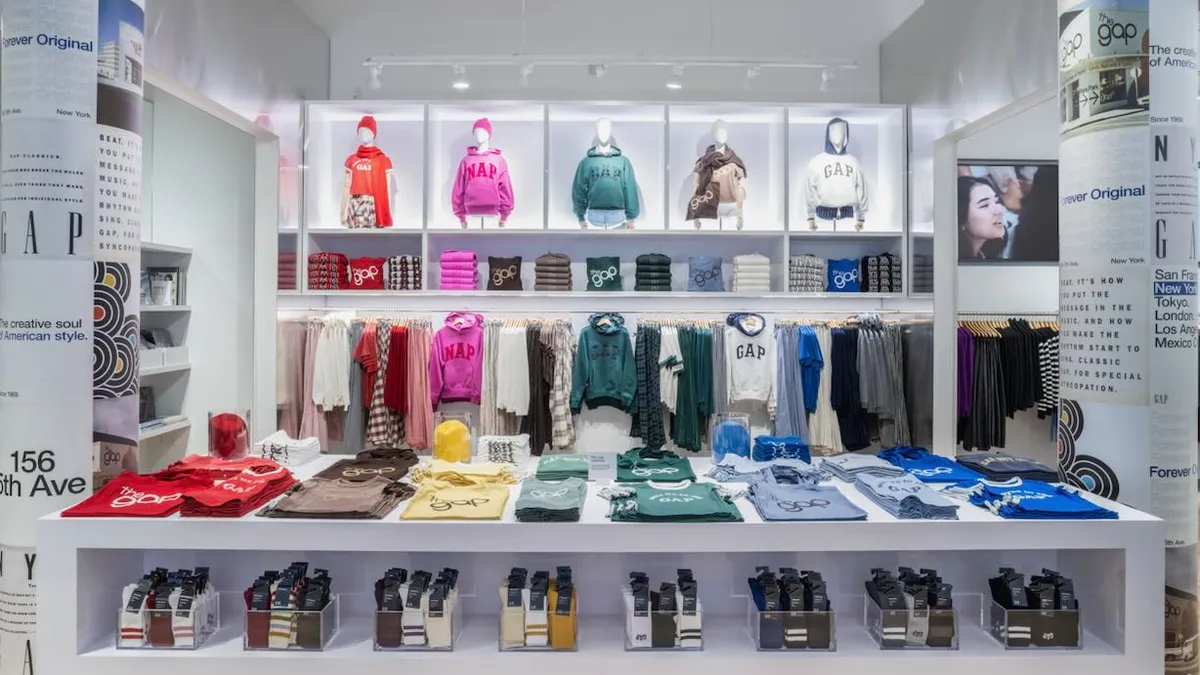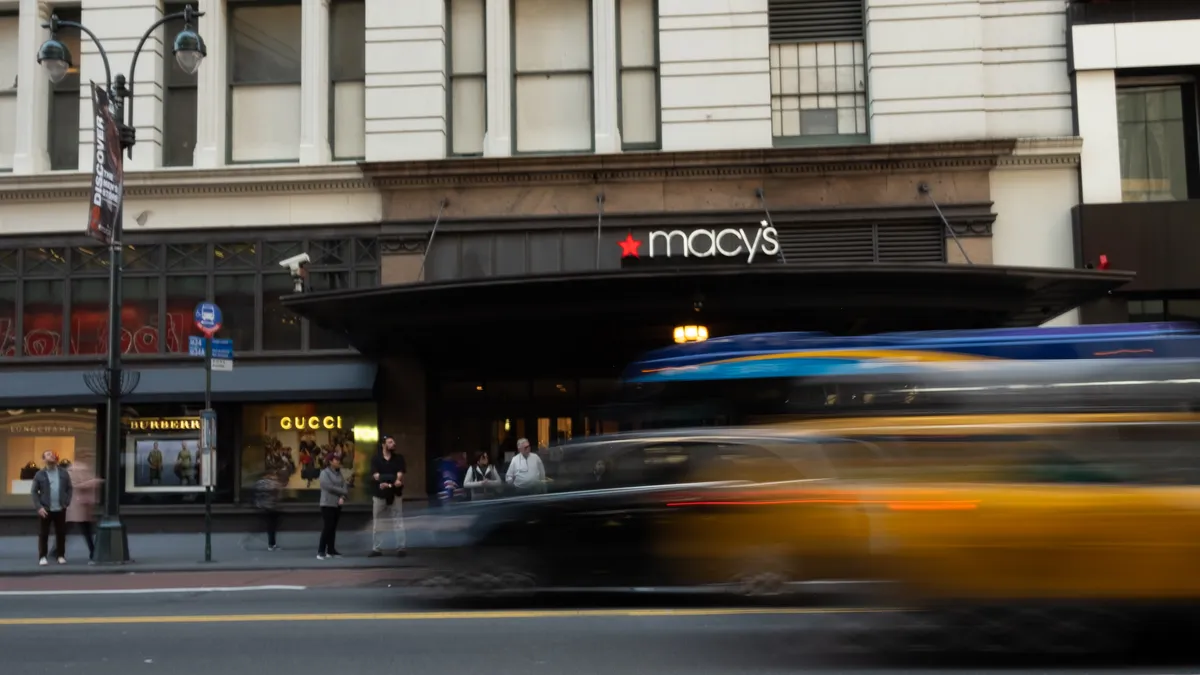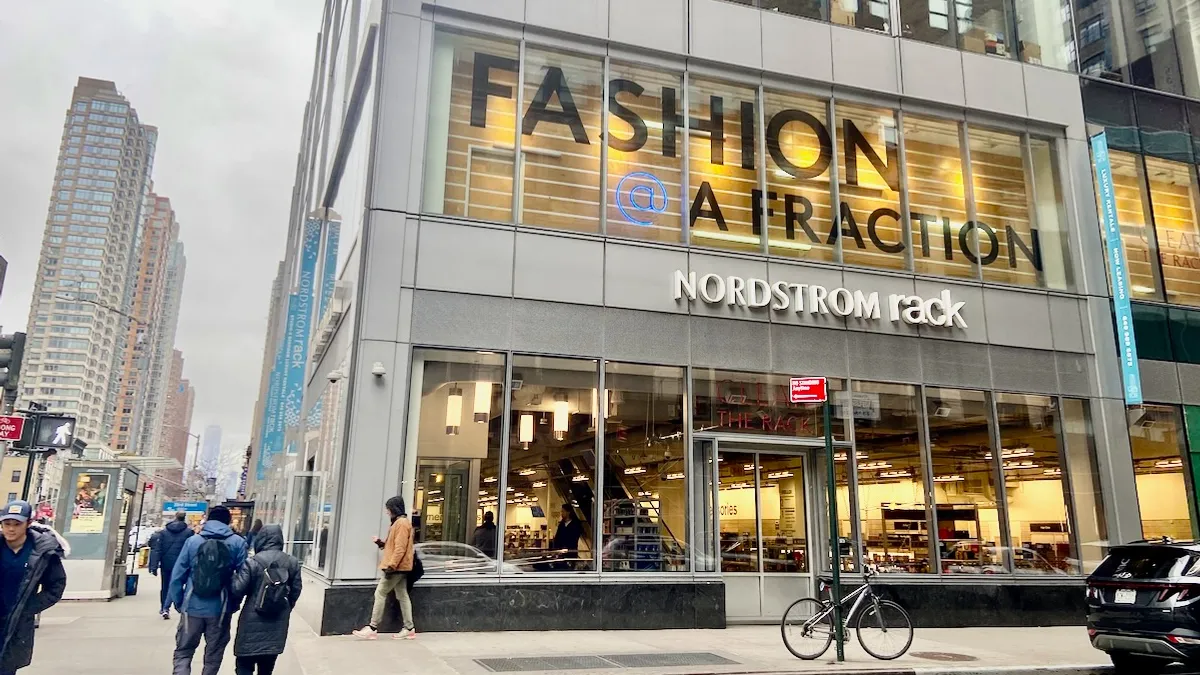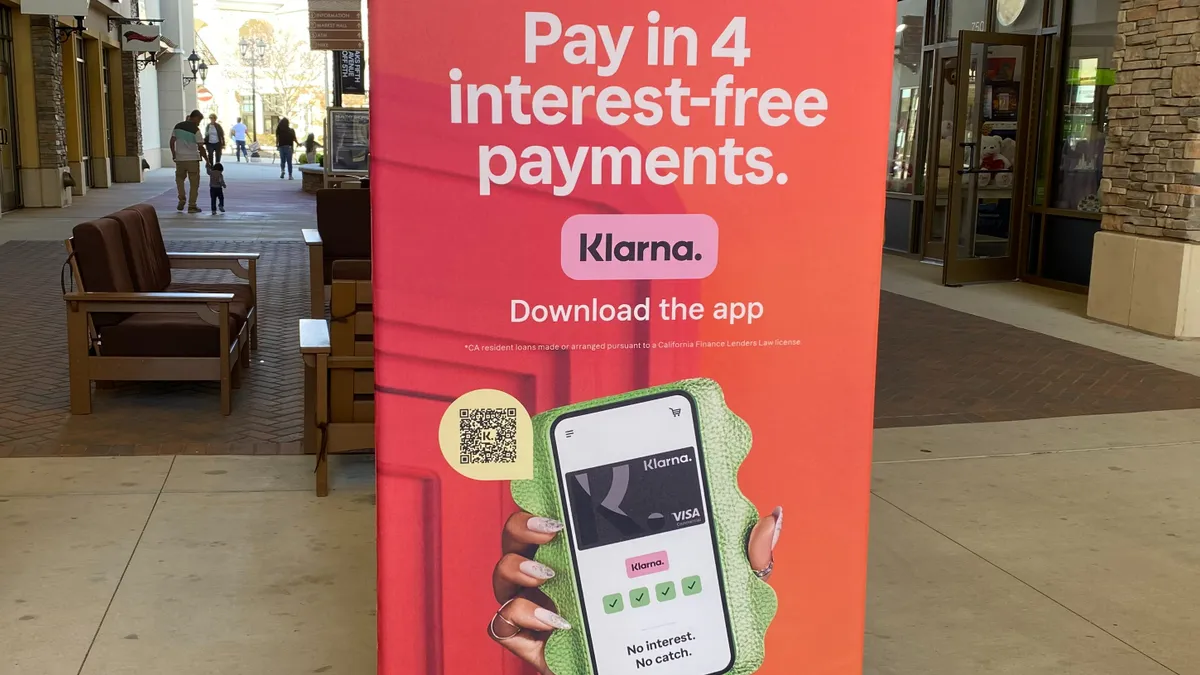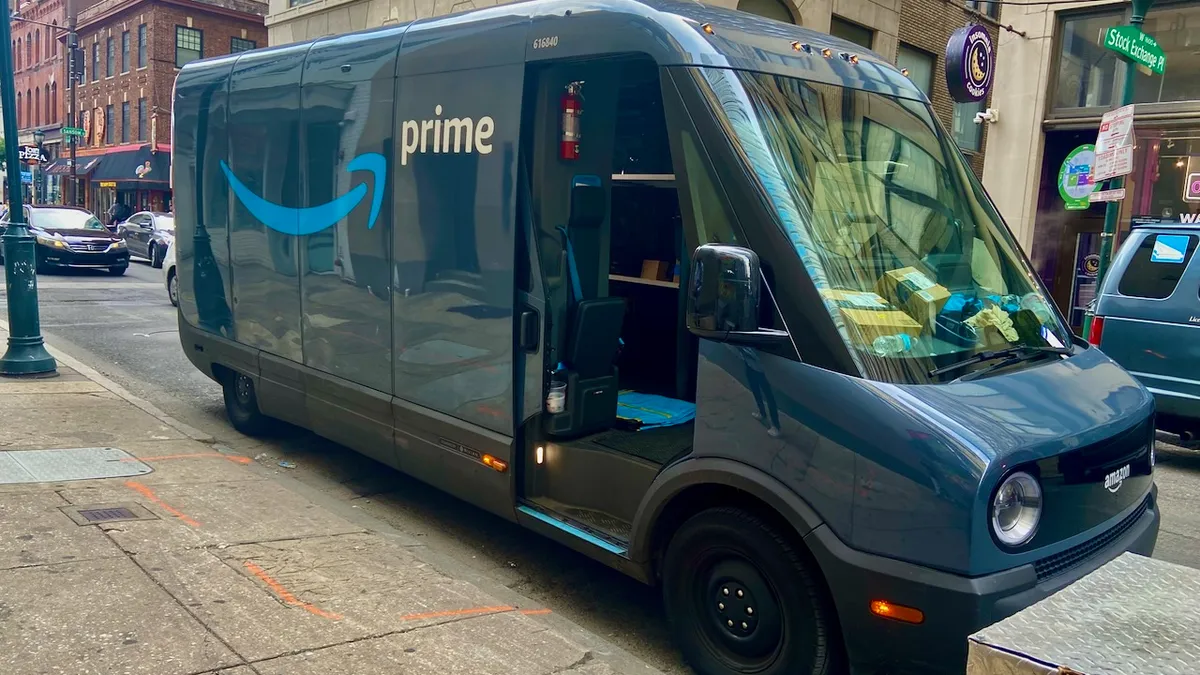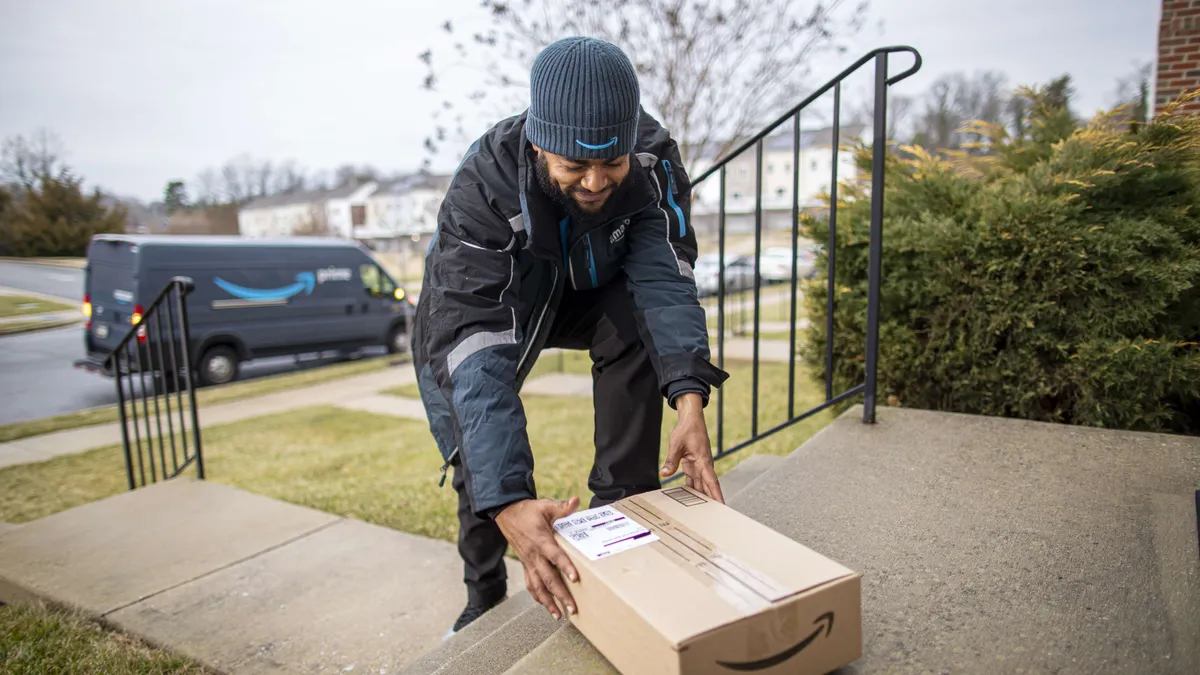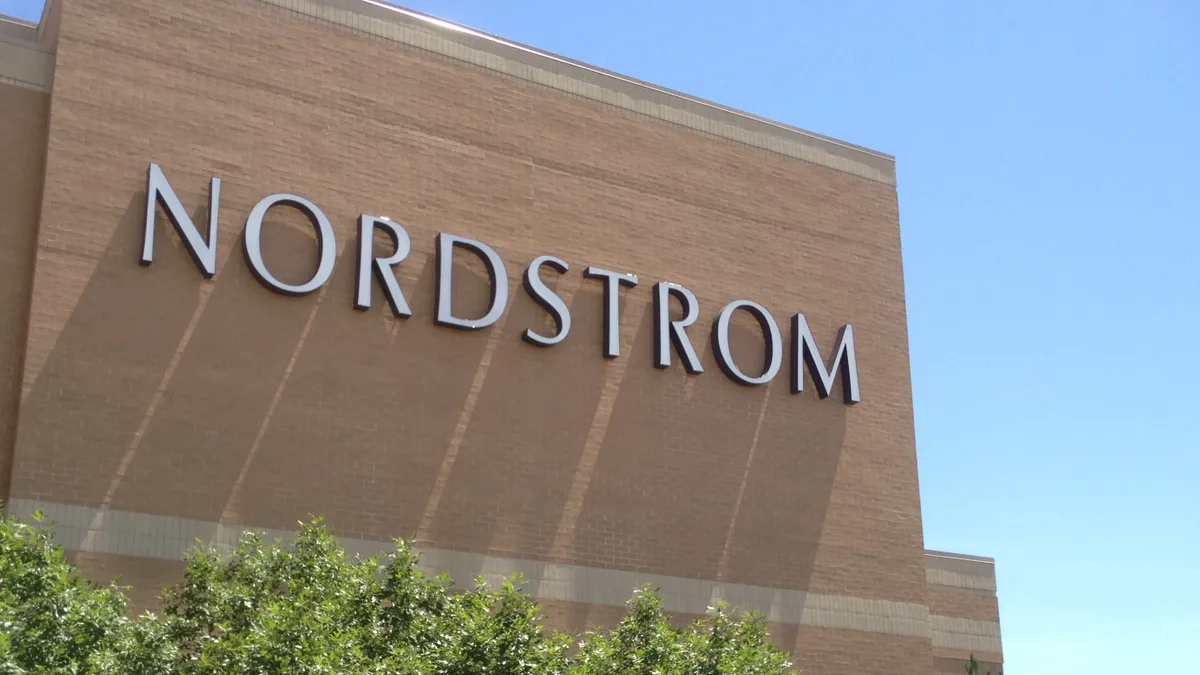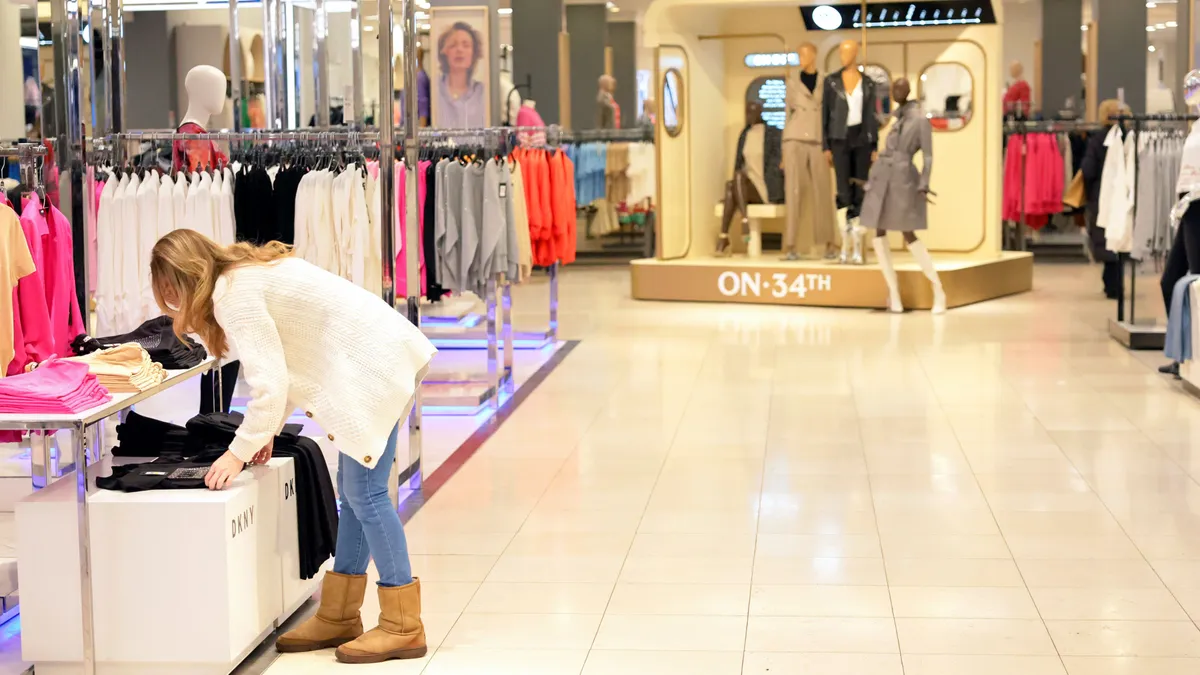The holidays are synonymous with a multitude of traditions, including a deluge of seasonal shopping forecasts. As in years past, the National Retail Federation has looked into its crystal ball, and it likes what it sees: The trade organization anticipates sales in November and December to increase 3.6% year-over-year to $655.8 billion — a notable boost over the 10-year average of 2.5%.
“This year hasn’t been perfect, starting with a long summer and unseasonably warm fall, but our forecast reflects the very realistic steady momentum of the economy and industry expectations,” NRF President and CEO Matthew Shay said in a statement. NRF Chief Economist Jack Kleinhenz added: "Consumers have seen steady job and income gains throughout the year, resulting in continued confidence and the greater use of credit, which bodes well for more spending throughout the holiday season.”
The same day the NRF released its forecast, the International Council of Shopping Centers unleashed its own powers of prognostication, releasing its annual Holiday Shopping Intentions Survey. The ICSC anticipates holiday sales in stores will rise 3.3% in the next two months, up from a 2.2% increase in the year-ago period.
Individual holiday shoppers plan to spend an average of $683.90 this year, according to the ICSC, noting that 91% of holiday shoppers plan to spend at brick-and-mortar stores, a number that grows to 96% when taking into account consumers who will make purchases online with retailers who maintain a physical presence.
“We continue to see positive consumer spending intentions ahead of the holiday season, with an emphasis on shopping in physical stores,” Tom McGee, the ICSC’s president and CEO, said in a statement. “Throughout 2016, consumers have demonstrated a tendency to shop across both digital and physical retail. Even shoppers who purchase online favor retailers with a physical presence and an increasing number of consumers are buying online and collecting in stores.”
Both reports track with earlier research from Deloitte, which in September called for holiday sales in stores and online to increase 3.6% to 4% this year, essentially unchanged from 2015 growth. But Deloitte anticipates e-commerce will have a far greater impact on holiday shopping than the ICSC, calling for digital sales to jump 17% to 19% this year, with e-commerce sales reaching somewhere between $96 billion and $98 billion. E-commerce will be “the major disruptor this holiday season," Rod Sides, Deloitte vice chairman and U.S. retail and distribution sector leader, said in a statement.
Following this flurry of forecasts, discussion forum RetailWire asked its BrainTrust panel of retail experts two questions:
- What is your forecast for the 2016 holiday selling season?
- How big a role will cross-channel capabilities play in sales performance this year?
Here are eight of the most provocative and insightful comments from that discussion. Comments have been edited by Retail Dive for content and length.
1. Keep your eyes on the road ahead
Roger Saunders, Global Managing Director, Prosper Business Development: We’re all handicappers at this time of year, as the consumers are out of the paddock and at the post. My tip sheet says follow the NRF’s lead. They have a solid and useful benchmark number that reflects where consumers are trending, as opposed to too many others who are using hunches or the rearview mirror. Your windshield is big, your rearview mirror is small. There’s a reason.
It will be important to follow and anticipate the segments that are most meaningful in delivering year-over-year gains. If your target is the 79 million millennials, don’t look at them in bulk. Break them down into four or five segments that can be targeted on their path to purchase. Cross-channel will everywhere this season, which complicates the path to purchase. By knowing your shopper, you can lay the path to know when to make the charge around the far turn. Credit card usage will be up for a number of categories, and that is a positive for retailers and card companies alike.
For the highest earning households, don’t expect to move significantly more soft goods this Christmas. They will be chasing experiences of trips, tickets, spa specials or that unique $750+ driver, which they may buy online or in-store. Be ready when they are.
2. Priorities in place
Ken Morris, Principal, Boston Retail Partners: The holiday sales forecasts from NRF seem pretty optimistic. I hope they are right. The final results may depend on how well retailers promote deals, the timing of those promotions and how well they execute on omnichannel services.
Last holiday season, many retailers had missteps when trying to execute flexible delivery/pickup options. According to a post-holiday study, 60% of click-and-collect orders placed on Cyber Monday had problems.
The good news is that many retailers are taking this seriously and are making unified commerce a priority this year. According to [Boston Retail Partners'] 2016 POS/Customer Engagement Survey, 85% of the respondents indicate that unified commerce is their top priority. Many retailers have taken the “just get something done” approach to deliver a seamless customer experience that transcends channels. The unfortunate result of this quick fix approach is a “faux” omnichannel model that doesn’t execute as promised and has the risk of disappointing customers. While 60% of retailers indicate they have implemented “inventory visibility across channels,” 80% of those retailers indicate that the system “needs improvement.” The ISCS consumer research dovetails nicely with our own retailer survey results.
Let’s hope that retailers have taken steps necessary to improve omnichannel services and they delight their customers this holiday season.
3. Curb your enthusiasm
Dick Seesel, Principal, Retailing In Focus LLC: If somebody tracked the annual NRF holiday forecast compared to actual results, I think they would find that this trade organization is consistently too optimistic. I feel the same way about their 2016 number.
And does their number include surging growth by e-commerce retailers, especially Amazon, or strictly brick-and-mortar and multichannel retailers like Macy’s? There isn’t much evidence from the numbers we’ve seen all year (especially from mid-tier retailers) to expect a sudden surge in demand. Some retailers have especially easy comparisons to 2015 (which will help), but I’d be pleasantly surprised to see numbers beyond the 2% to 3% range.
4. Election expectations
Ron Margulis, Managing Director, RAM Communications: Perhaps like never before, sales for this holiday season will depend on the outcome of the election next month. If Trump is elected, people at the top and bottom on the income scale will be celebrating for very different reasons. The 1 percenters can expect a nice tax break going forward and so may be more inclined to spend a little extra. The lower income group that has supported Trump for the last year may also rejoice with a few extra baubles under the tree. The rest of the population will likely pull back on spending in anticipation of what they perceive as the dour economic consequences of the election. Net-net for a Trump win is no growth in sales for the season and perhaps a slight decrease from last year.
If Clinton is elected, there will be more spending by the extended middle of the income spectrum (25% to 95%) and slightly less from the least well off. The 1 percenters will still spend, but perhaps not as ravenously as they would with the prospect of a tax gain. Net-net for a Clinton win is 2% to 3% growth in sales for the season.
5. Attitude adjustments
Tom Redd, Global Vice President, Strategic Communications, SAP Global Retail Business Unit: Heck, I do not care about how optimistic the NRF is — they are close to right. The election will be over and just that makes Christmas and most elements of every religion happier. The election’s ending will have more impact than personal income. Elections take a lot of energy and positive attitude out of shoppers. When they are over most Americans adjust by bird day and are ready for more vacation and Christmas break.
Also, more retailers have gotten their multichannel games in gear and are well past mid-field so they are hiring fewer add-ons for in-store, but are ramping up distribution centers. Amazon will have its few weeks of glory and I estimate that with the holiday Prime mass-streaming they have this year that their systems will crash at least once in a specific region.
6. Lean thinking
Shawn Harris, N.A. Retail & Hospitality Industry Lead, Zebra Technologies: Retailers should look at last year as a turning point, where more shoppers chose online vs. offline on Black Friday 2015. This means they should go leaner on in-store inventory (don’t worry, the majority of shoppers will start with your website anyway), ensure their websites can truly dynamically scale to meet load, use broadcast media to create theater and excitement in combination with personalized targeted ads on social platforms, and deliver what they say they will deliver.
7. Recovery may be regional
Ralph Jacobson, Global Retail Industry Analytics Marketing Executive, IBM: I think this holiday period will be a strong season for retailers, however I believe there will be more variance across metropolitan areas in the U.S. than in recent years. Certain cities are seeing stronger retail recovery than others. Retailers shouldn’t assume the same forecast across the country. We may actually see dips in growth in depressed regions. Online shopping will indeed be the great equalizer, both regionally as well as for smaller retailers versus the giants. Online allows small players to “punch above their weight.”
8. Get back to basics
Mark Ryski, Founder, CEO & Author, HeadCount Corporation: While the NRF is optimistic by nature, retailers should be careful to not get complacent. There has been a persistent softening of store traffic in 2016 and there’s no evidence to suggest this will change for Christmas — despite the positive economic indicators. Retailers should consider their store traffic as a precious, non-renewable resource. Don’t count on be-backs. Focusing efforts on fast transaction processing, aligning staff to traffic and in-store conversion is key. As is almost always the case, the retail winners this holiday season will be the ones that execute the basics consistently and effectively.
This story is part of our ongoing coverage of the 2016 holiday shopping season. You can browse our holiday page for more stories.


